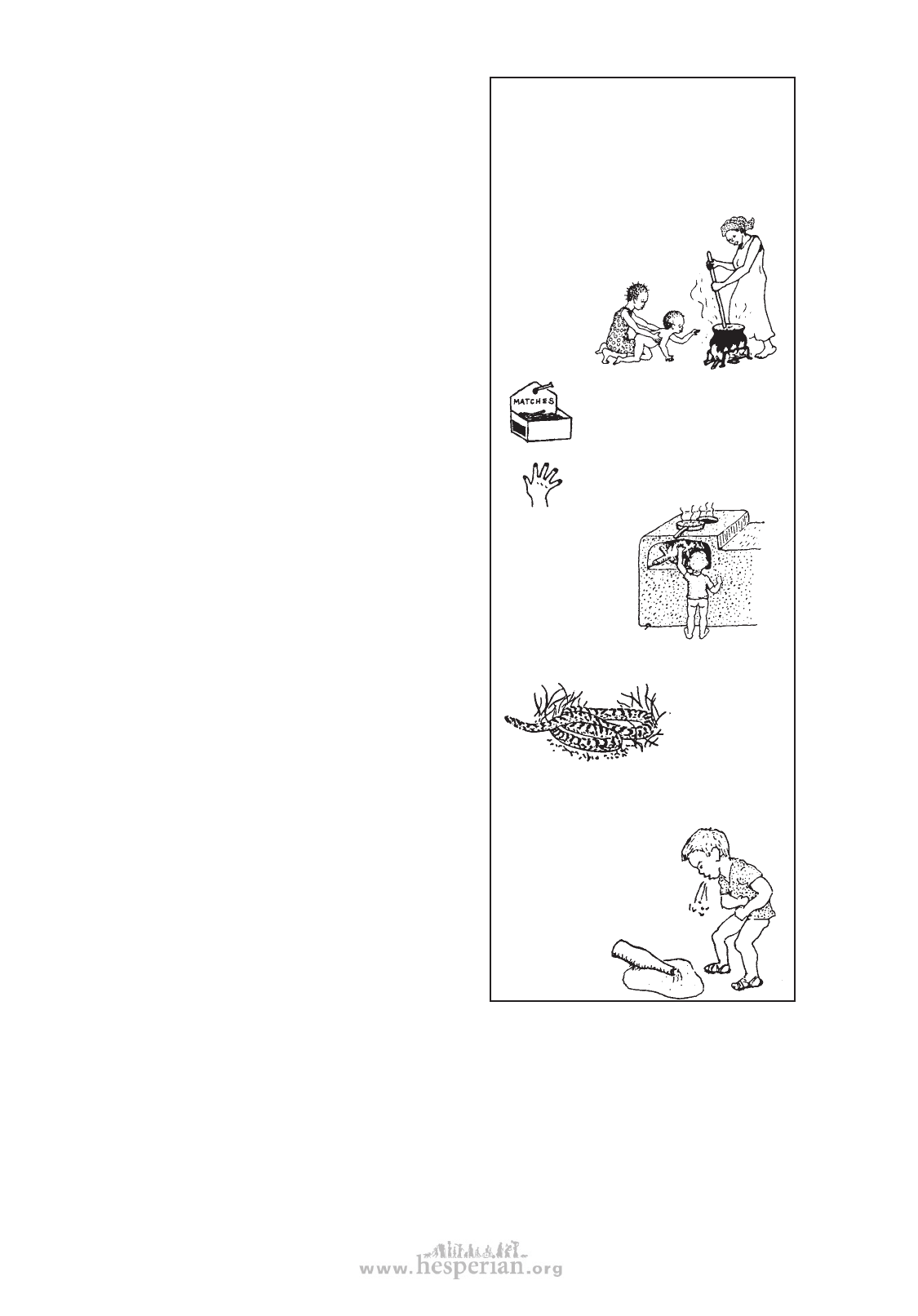
428 chapter 47
Other activity sheets in Child-to-Child:
A Resource Book, that include
From the CHILD-to-child activity sheet:
disability prevention are:
ACCIDENTS
• Feeding young children: feeding children
aged 6 months to 2 years
• Feeding young children: how do we know if
Help children learn how important it
is to:
they are eating enough?
• Caring for children with diarrhea
• Preventing accidents
• Our neighborhood
• Playing with young children: playing with
babies
• Playing with young children: play for pre-
school children
• Make sure that
their younger
brothers and
sisters do not
go too close
to the
cooking
fire.
• A place to play
• Caring for children who are sick
• Safe lifestyles
• Keep matches out of the
reach of small children.
(They can even make
a small basket or shelf
CHILD-to-child activities can be introduced:
• by schoolteachers with schoolchildren,
for matches to be stored
high on the wall.)
• by schoolchildren (who have practiced
the activities in school) with younger
schoolchildren, or with children who do not go
to school,
• by health workers or community
rehabilitation workers,
• Be sure that
handles of pans
are turned so
that the child
does not pull
• by parent groups or any concerned persons in
them.
the community.
• Warn younger
The purpose of CHILD-to-child activities that
children about
where snakes,
relate to disability is to help children:
scorpions, and
• gain awareness of different disabilities and what
bees live.
it might be like to be disabled,
• Clear grass
• learn that although a disabled person may
and weeds away
have difficulty doing some things, she may
from paths.
be able to do other things extra well,
• think of ways that they can help disabled
children feel welcome, take part in their play,
schooling, and other activities, and manage
to do things better,
• become the friends and defenders of any
child who is different or has special needs.
• Make sure poisons
such as medicines
and insecticides are
kept out of reach,
and that kerosene
is not stored
in drink
Rehabilitation programs in several countries
bottles.
have developed their own, more complete
CHILD-to-child activity sheets. Here we combine versions from Kenya (Africa), the
Philippines, and Mexico (where some of the original sheets were developed and tested).
The 3 activities we include in this chapter are:
“Understanding children with special problems” (p. 429)
“Children who have difficulty understanding” (p. 442)
“Let’s find out how well children see and hear” (p. 447)
Disabled village Children